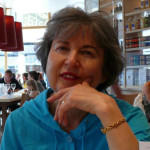Ever since working at a historical research centre way back, I won’t say when, I’ve always wanted to write a novel set in nineteenth-century Montreal. My job at the research centre depended on mining the contents of nineteenth-century Canadian newspapers, which I found to be intriguingly racy, and saucy founts of information.
Four years ago I was between projects and began to think about this putative nineteenth-century novel of mine. I thought I would set it in 1849, when the Tory merchants of Montreal decided to burn down the Parliament buildings, then located in the city. A great background, but when I started digging, I invariably dozed off over the details of the Rebellion Losses Bill.
My next idea, sparked by a column in The Gazette by John Kalbfleisch, was to focus on a pair of star-crossed Montreal artists, but alas I couldn’t find enough material on them for a magazine piece, let alone a novel. But it was while rooting around in search of this couple that I happened upon William Notman’s photography studio, the splendid venue where Montreal’s painters exhibited their work in the 1860s. Notman was the first Canadian photographer to achieve international renown and the most commercially successful of all North American photographers of his time. His life – it became apparent – would be my project, and it would be a radio documentary, not a book.
At the initial stage of my research, I asked an idle question of my main source, Nora Hague, the go-to person at the McCord Museum, the go-to place for all things Notman.
“Were there any black sheep in the Notman family?”
I wasn’t deliberately fishing. I was simply doing what a writer does automatically, sniffing around for a story.
“Well,” came the answer, “there was his brother, John. Also a photographer, who was run over by a train. He had what today is called a drinking problem.” She paused. Picking her words carefully, she added, “And of course there was Robert, another hard-living boy. The brother who was tried for murder … A huge case that was reported in all its ins-and-outs in The Gazette.” Her voice trailed off. I had the distinct impression that this chapter of the Notman saga was strictly classified.
While conducting my study of Notman’s career, I started to poke around for the tale of the allegedly murderous brother. And I stumbled on a yarn far more absorbing than a Gothic whodunit. A drama through which Victorian Montreal, so lavishly depicted by the camera of William Notman, could be viewed beneath the surface of carefully arranged settings, heroic poses, and gorgeous costumes. A story with themes that travel well across generations and cultures: the flouting of society’s rules, and its consequences.
There was no murder, but there was illicit sex, suicide, a trial. It was a big story and so difficult to research that I gave up working on it several times. Too much of the source material derived from smudged editions of newspapers on microfilm. Too much of it was couched in nineteenth-century legalese. But even as I contorted my back over the microfilm reader and strained my eyes trying to decipher poorly reproduced pages of ancient newsprint, the story would not let go of me. There was the famous brother and his estimable wife, and the other brother in whose wake tragedy inevitably followed.
Here was a topic for a book, but if cast as a novel it would be too far-fetched for credibility. How to handle it?
It took me time to resolve the conundrum. In the end I chose to go a route I had already taken twice: creative nonfiction. But whereas my earlier works drew on my own Hungarian-Jewish roots, this book with its Presbyterian Scottish background was terra incognita for me.
The most elementary lesson of how to write and what to write is the well-known doctrine “write what you know.” But, as I remind participants of my writing workshops at the QWF, the poet George Bowering maintains that “if you write about what you know, you will keep on writing the same thing, and you will never know any more than you do now.” Even when presenting my own family, I’ve always preferred to explore what I didn’t know, in order to learn something new.
So I took courage and kept plugging away at this true story that seemed too difficult to undertake. I started it knowing next to nothing about nineteenth-century photography, law, and medicine, all vital elements of the drama. The result is Portrait of a Scandal: the Abortion Trial of Robert Notman. Yes, that’s right. An abortion trial set in Victorian Montreal. Coming soon from Véhicule Press.
Elaine Kalman Naves is a two-time winner of the QWF Prize for Non-fiction. Visit her website at ElaineKalmanNaves.com.
